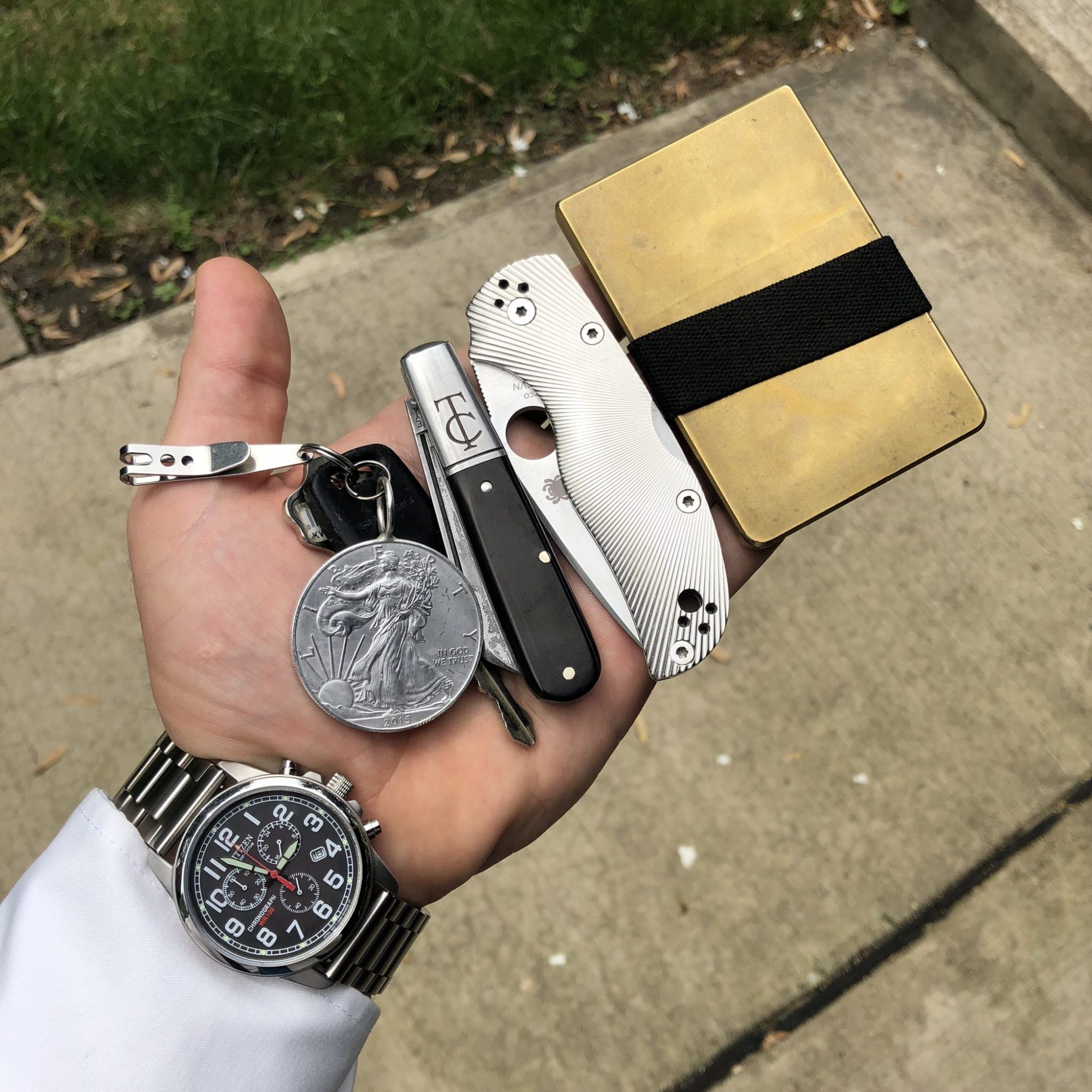The Rider by CC is the latest in a string of incredible Special Factory Orders for Charlie Campagna by Great Eastern Cutlery, and a classic Harness Jack.
Who is Charlie Campagna?
Charlie Campagna is a knife collector whose passion has helped spur the re-popularization of traditional knives. His special factory orders have contributed greatly to the reemergence of classic knife patterns like the Barlow (if you love Barlows, check out the Barlow Bearcat Club here!) and the Harness Jack. Whether on the forums or in person at knife shows, like the Great Eastern Cutlery Rendezvous, his generous sharing of knowledge and jovial yet reserved temperament has been a boon to the traditional knife community. Here’s a link to a great Q&A from VintageKnives.com in 2004, that might help to illuminate who Charlie is.


What is Waynorth Cutlery?
Waynorth Cutlery is the brand created and owned by Charlie Campagna. It is named after his BladeForums username, “Waynorth”. So far only three knives have been graced by the Waynorth Cutlery tang stamps; “Waynorth” arched over “Cutlery” over “Buffalo, NY” and on the reverse the classic “OIL THE JOINTS”. Those knives are the Lambfoot (GEC #93 pattern), Blackjack (GEC #86 pattern), and now the Rider by CC (GEC #86 pattern). Although Charlie did have knives made by Queen while Bill Howard (now founder / owner of Great Eastern Cutlery) was head cutler there, all of the Waynorth branded knives have been made by GEC. The Rider by CC is Charlie’s newest special factory order, and is a Harness Jack.

What is a Harness Jack?
A Harness Jack is a classic pattern that typifies the historical draw of traditional knives. The Harness Jack is a jack knife, meaning both “blades” come from the same end of the handle, and includes a main blade and a leather punch (sometimes called an awl). The main blade is often a spear point, but can be a clip point like on the Rider by CC. The handle is often a swell end, where the handle widens from the pivot end to a rounded butt end, but can also be a sleeve board or equal end pattern. The secondary blade, a punch, is a triangular piercing tool with a sharpened edge. Like many traditional patterns, the Harness Jack is a tool that was created for a specific use that was more common in our past. For the Harness Jack that use was repairing leather goods, specifically horse tack. The Harness Jack was a popular pattern in the heyday of traditional pocket knives, around the turn of the 20th century. At that time almost everything ran on horse power; manufacturing machinery, farming equipment, and of course transportation. Additionally, more everyday goods were made of leather. So if your horse’s harness or your briefcase’s strap broke, it was extremely convenient to have a punch available to make a new hole and mend it enough to get through your day. There were a myriad of punch designs, and there was even several patents filed in the 1910s, probably to capitalize on World War 1 and the demand for tack and other leather goods it would cause. However, the pattern seems to have faded and basically died out in the 1930s. This timeframe coincides with the rise of the automobile and its becoming commonplace in everyday life, and therefore less need for horse tack. That said, the punch didn’t entirely disappear from the knife industry; Scout and Camp knives continued to include a punch, due to the higher likelihood that one would need to repair leather while recreating outdoors. So, like other patterns with historic uses (Trapper, Cotton Sampler, etc.), the Harness Jack harkens back to a different time and gives that feeling of historicity that is so integral to many collectors’ enjoyment of traditional knives.

What makes the Rider by CC special?
The Rider by CC brings Charlie’s designs full circle. Being that his main collection interest has been Harness Jacks and his first SFOs with Queen were Harness Jacks, it’s fitting that this latest is a classic example of the pattern. The Rider by CC also shares connections with two other of Charlie’s SFOs, the Texas Camp Knife and Blackjack. Charlie had a special version of the GEC #98 Texas Camp Knife made, and believe it or not the punch on the Rider by CC is the same as the one used on the #98 (which I forgot to mention in the above video, to my great frustration). The Blackjack was a Jumbo Jack SFO Charlie had made on a previous run of the #86 pattern, the same frame as the Rider by CC. The Rider by CC also has a special “Empire” shield, based upon a shield often used by Empire Knife Company. Empire is a brand that Charlie has also collected and has an incredible display of their many patterns, so the Rider by CC’s unique shield serves as a great reference to that side of Charlie’s collection. The Rider by CC is a quintessential Harness Jack that perfectly represents Charlie’s passion for traditional knives and his Waynorth Cutlery brand.

I sincerely thank you for your time, support, and interest! Don’t forget to tell your friends about KnifeThoughts.com, subscribe via email, and share this article on social media. You can find Knife Thoughts on YouTube where I have hundreds of knife videos, as well as on Instagram and Facebook! You can find all my latest links at LinkTr.ee/KnifeThoughts

















